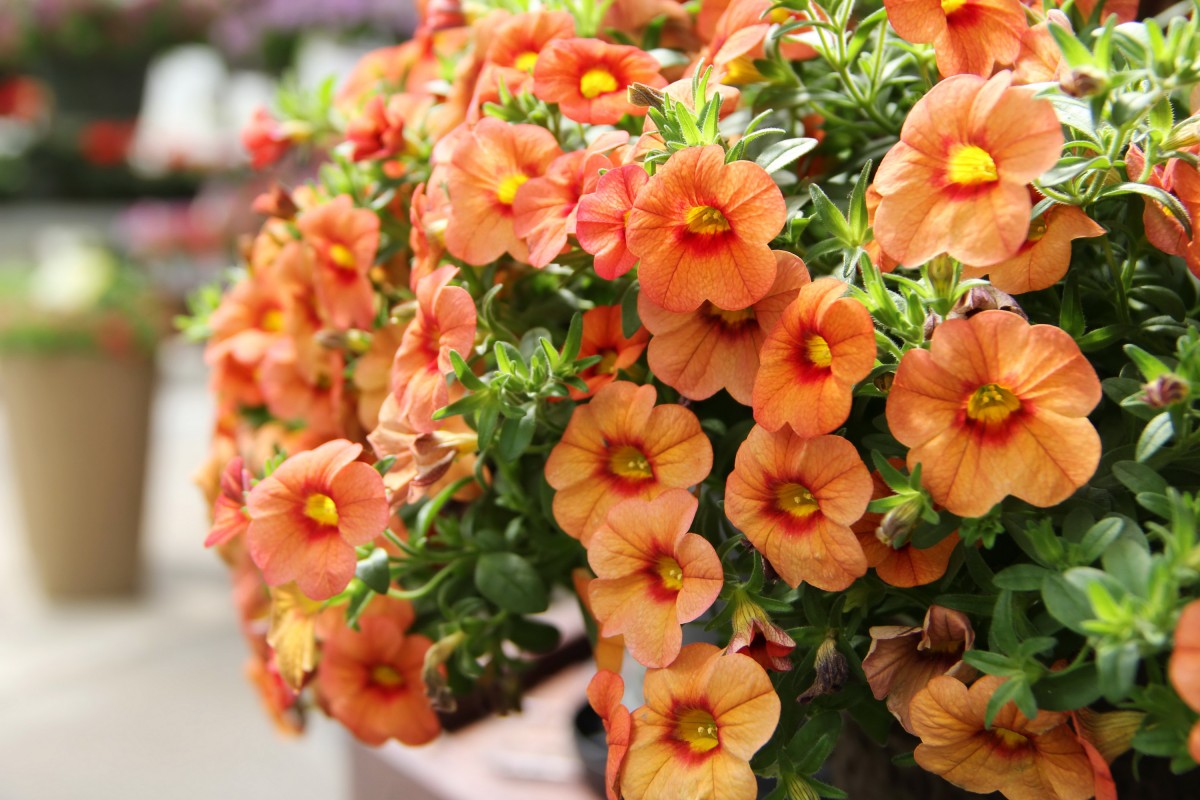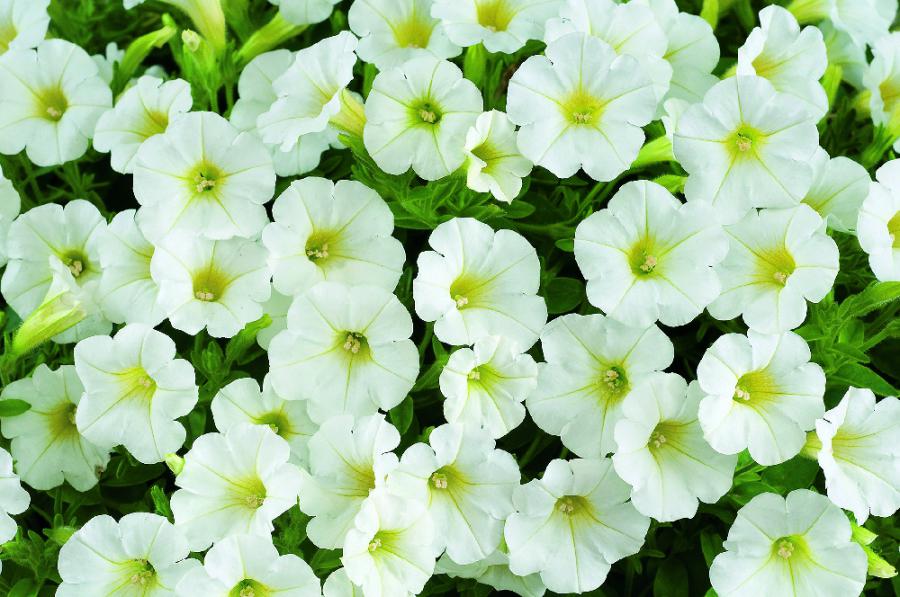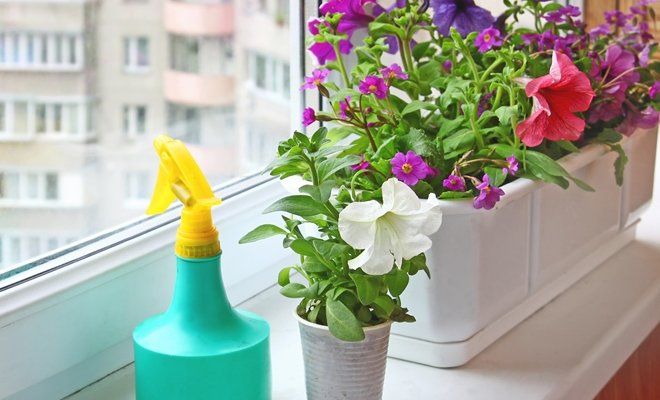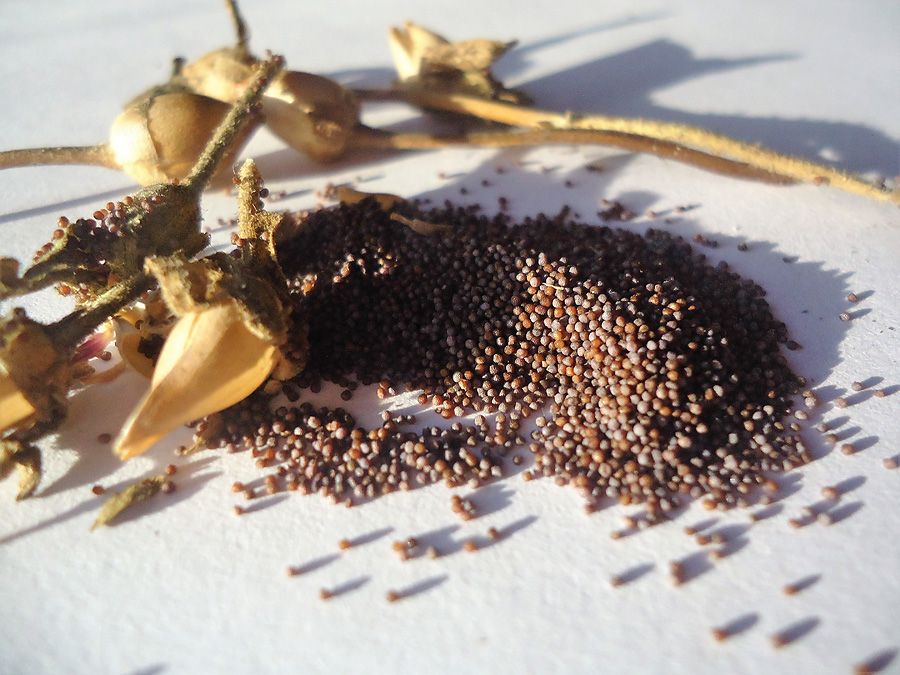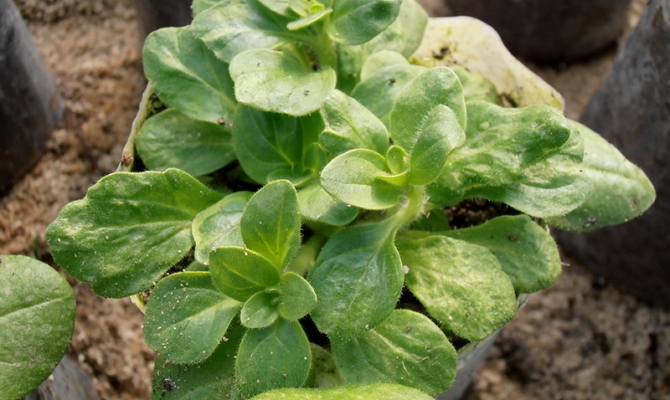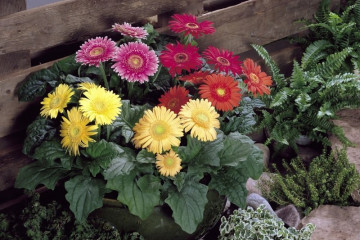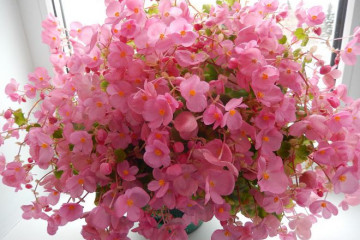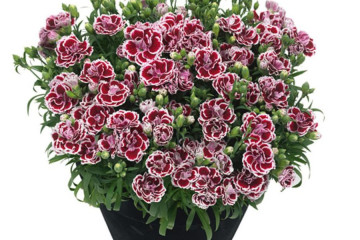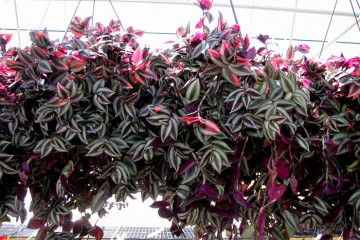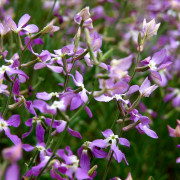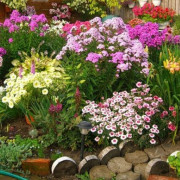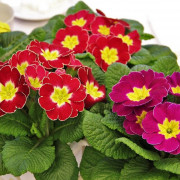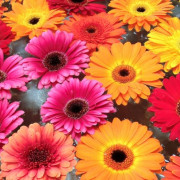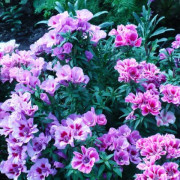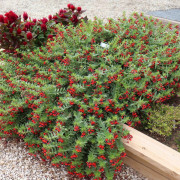Indoor petunia - care and cultivation at home
Content:
Petunia is a flowering plant that is prized by gardeners for its decorative qualities and wide range of colors. The flower is unpretentious to care for and is combined with other plants in the garden.
About the history of appearance
At the end of the 18th century, the first flower was found and recorded for the first time, which was later named petunia. The famous scientist Lamarck at that time originally named the plant Nicotiana axillaris, later it was renamed Petunia axillaris. The word "petun" in translation from Brazilian means "tobacco", these plants are relatives.
What does petunia look like
Petunia, or petunia - a representative of the Solanaceae family, has the appearance of a herbaceous or semi-shrub plant. Among them, there are both annual and perennial species.
Outwardly, petunia resembles a small shrub that branches and grows rapidly. Stem height is 20-35 cm, some varieties can grow up to 60-70 cm. Leaves of rich green color reach 5-10 cm in length.
Common varieties
There are about 22 species of petunias and more than 70 hybrid varieties. In their form, petunias are:
- Ampelny. A distinctive feature of the plants is a long weaving stem. Ampel varieties are planted in hanging pots;
- Stunted or dwarf. Plant height does not exceed 25 cm;
- Shrub. They differ in the large size of the flower, in diameter it reaches 11-14 cm.
Petunia care at home
A flower that becomes a real decoration of a garden or a balcony in an apartment is petunia; care and cultivation at home requires precision and step-by-step operations.
Temperature
During formation and growth, the flower should be indoors at a temperature of 20-22 ° C. During the flowering period of petunias, the air temperature should not exceed 25-27оС.
Lighting
Petunia is a light-loving flower, without good lighting there will be no abundant flowering. Areas with good lighting and the presence of shade from other plants, trees, sheds are suitable for growing.
Watering
Those who decide to decorate their garden with flowering plants need to know how to properly water petunias at home. Watering features:
- Watering should be moderate, without excess and lack of moisture;
- It is preferable to moisten the flower not by watering from above, but with water in the pan of the pot;
- For irrigation, you need to use soft water without chlorine impurities. Tap water must be allowed to settle for several days;
- The water and soil in the pot must be at the same temperature, you cannot pour cold or heated water;
- On sunny days, the flower is watered in the evening to avoid evaporation of the water.
Spraying
In dry and hot weather, the flower must be sprayed daily with settled water from a spray bottle. The plant is irrigated in the evening when there is no direct sunlight.In winter, spraying is carried out as dust accumulates on the leaves.
Humidity
There are no special requirements for air humidity. The flower is native to the tropics, tolerates warm weather well. The moisture level should be monitored at the initial stages of growth, when the seedlings are just beginning to emerge.
Priming
Petunia takes root well in various peat-based soil compositions, with the exception of acidic and alkaline soils. The soil should be loose, nutritious and light.
For cultivation in containers, mix sand, peat and loam in a 1: 1: 2 ratio. It is better to choose low-lying black peat, it is nutritious and has less acidity.
For self-preparation of the substrate, you need to have the skills and accurately observe the proportions. In order not to be mistaken, you can use any ready-made petunia mixture from the store.
Top dressing
During growth, the flower needs fertilization. It is better to give preference to ready-made mixtures for feeding, it is more difficult to make it yourself. You can use complex fertilizers with a high concentration of potassium.
Petunia begins to feed 14 days after transplanting into a pot. During the flowering season, fertilizers are applied every 2 weeks.
During the rest period
In the cold season, petunia begins a dormant period. With the onset of cold weather, the plant in pots is transferred to a lighted room, the air temperature should be in the range of 9-15 ° C. The flower can be stored on a glazed balcony, loggia, window sills in unheated porches. During the rest period, you need to provide:
- Watering every 2-3 weeks;
- Diffused lighting;
- Sufficient air humidity;
- Lack of feeding.
When and how it blooms
Different types and varieties of petunias bloom in different ways, differ in the shape and size of the flowers.
Types of flowers
All plant varieties are divided into multi-flowered and large-flowered, each type has its own characteristics:
- Multi-flowered plants consist of a large number of buds per bush, which grow densely. The flower diameter does not exceed 4-5 cm;
- Large-flowered varieties are more vulnerable and do not tolerate rain and strong winds. They grow best in hanging pots and baskets under a canopy. Flowers grow up to 8-14 cm.
Flower shapes
Petunia flowers are single, round, funnel-shaped. The edges of the petals can be smooth or fringed. The corolla of the flower looks like fused petals, often symmetrical or star-shaped. A separate type of petunia is double, such flowers consist of a large number of petals and look like roses.
Flowering period
The flowering season for petunias begins in summer and lasts until early autumn. In warm regions, where there is enough sunlight, flowering can continue until late autumn.
Changes in care during flowering
In the flowering season, petunia does not require special conditions. It is enough to take care of it, as before: moisten the soil in time, irrigate the leaves with water from a spray bottle and feed it every 14 days.
Pruning at home
Pruning is carried out in several stages:
- In June, before flowering, the plant is pinched - the ends are cut off, this procedure allows you to preserve the splendor of the bush. You need to cut off the ends above the 5th internode;
- In July, dried leaves and buds are removed so that seeds do not ripen in them;
- In August, petunia partially loses its strength, at this time, repeated pinching is carried out in order for the plant to resume growth;
- After flowering, dried buds must be removed. If seed collection is planned, pruning is carried out only after the seed boxes have been collected.
How to propagate petunias at home
Amateur gardeners are interested in how to grow petunia from seeds or using cuttings at home. Each method has its own characteristics.
Germinating seeds
Growing petunias from seeds is not an easy procedure. At home, seeds should be planted in the 2nd half of March, when daylight hours increase. Seeds for breeding are planted in the 2nd half of January, in this case the seedlings will get stronger by April.
How to prepare the seeds:
- The seed boxes are collected when they are darkened and cracked, but have not yet opened;
- The seeds must dry out, for this they are laid out in 1 layer on paper;
- Within 90-100 days, the seeds ripen, they need to be stored at room temperature in a paper bag.
How to plant seeds:
- It is necessary to choose a container for planting up to 10 cm high. Before planting it must be disinfected;
- A drainage layer of expanded clay is poured into the container, 3/4 filled with soil from above. For seedlings, you can use a mixture of coarse sand, turf, black peat and humus in a ratio of 1: 2: 2: 2. The soil must be sprayed with water;
- Sow petunia seeds with a toothpick. You can also mix them with sand and scatter them over the surface. It is not necessary to cover the top with earth;
- The container is covered with glass or covered with foil. Every day you need to remove condensation and ventilate the soil for 10-15 minutes.
Rooting cuttings
Reproduction of petunias by cuttings at home allows you to maintain lush flowering in the new season. How to cut petunia:
- In early spring, you need to cut off young shoots 7-11 cm high, remove all leaves from them, except for 2 on top;
- Loose soil is poured into the prepared container by 2/3. The cuttings must be buried into the ground to a depth of 4 cm, at a distance of 5-6 cm from each other;
- The soil around the cuttings is compacted by hand, irrigated with water;
- The container is covered with foil or glass.
The root system develops at a temperature of 22-24 ° C, every day the soil needs to be moistened. Cuttings should be kept in a lighted room for 9-10 hours a day. If sunlight is not enough, fluorescent lamps should be used.
Transplanting indoor petunias, picking
One of the frequently asked questions is "can petunia be grown as a houseplant?" The flower grows best outdoors, and can grow in the garden or on the balcony. The plant is grown at home for further planting in a permanent place. Before that, a pick is carried out - a preliminary transplant into a temporary pot.
Petunias dive when the foliage is forming on the sprouts. How to do it correctly:
- Prepare soil for petunias, pour it into plastic transparent glasses 1/2 way;
- The sprouts are dug up together with a clod of earth so as not to damage the roots, and placed in a glass;
- The cups must be filled with soil to the top.
For about 30 days, the sprouts will form a root system, they will grow slowly. After 40-50 days, active growth begins, the interlacing of the roots will be visible in a transparent glass. At this point, the petunia needs to be transplanted into a 2-3 liter pot.
Possible problems in growing petunias
Having figured out how to grow petunia from seeds or by cuttings, you need to be prepared for possible problems.
A damaged plant is easy to recognize, its stems are weakened, the leaves become dull or yellow. Fungal diseases or pests are always clearly visible.
Diseases
Failure to comply with watering rules and dense planting provoke the formation of a "black leg" in petunia seedlings. How to fix the problem:
- Remove the diseased plant along with the roots and soil around;
- The rest of the plants must be treated with a fungicide;
- Establish an irrigation regime, prevent moisture stagnation.
Plants can be susceptible to fungal diseases, the most common disease is powdery mildew. The reason for its appearance is temperature drops and high soil moisture. The spoiled areas of petunia must be removed, the rest are treated with sulfur compounds.
Pests
Petunias are exposed to such pests:
- Spider mite is a small spider that winds up among the foliage and envelops it in cobwebs. Spraying with sulfur compounds, water and tobacco solution will help get rid of it;
- Whiteflies are small white butterflies. To get rid of them, you need to treat the leaves with soap or tobacco solution, insecticides;
- Aphids are dot-sized pests. The lower part of the leaf is affected, after which the leaves curl. You can get rid of aphids with a soap and soda solution or chemicals.
Other problems
Other problems include yellowed leaves and weak stems that cause the plant to fall. These problems are associated with improper transplantation and care. Perhaps the plant is planted in the wrong soil, or it lacks food and light.
Among the variety of garden flowers, petunia is more popular; growing from seeds at home and further care require serious attention. The plant needs to be watered, pruned and protected from pests on time in order to get excellent flowering.
Video
